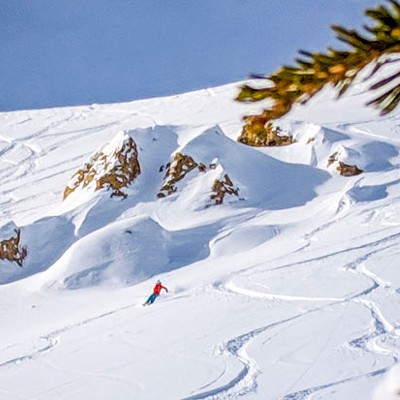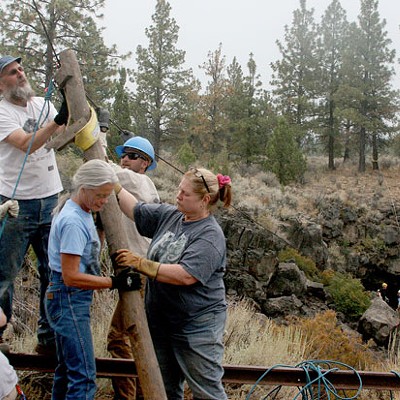When Brent McGregor and Eddy Cartaya, of the Oregon High Desert Grotto (OHDG) cavers, took on the gigantic project of exploring Snow Dragon glacial cave on Mt. Hood, they didn't know where it would lead. They took Oregon Public Broadcasting's Oregon Field Guide crew in to film their under-the-ice adventure, and the success of the project led to the formation of the nonprofit organization Glacier Cave Explorers (GCE).
One of the goals of GCE is to learn how glacier caves influence the growth and recession of glaciers, and how they channel the effects of climate and geothermal activity. The need is to determine how these forces work in order to try to control the life and death of a glacier and influence ice packs. By finding out why ice packs are disappearing and how the caves influence that, researchers hope to become better informed about protecting the caves and ice packs, or planning for the consequences.
Not only was the Snow Dragon project a smashing success for McGregor and Cartaya on public television, but glacier scientists found it so intriguing that research expeditions were planned for three more mountains. Scientists contacted the team to explore Sandy Glacier Caves on Mt. Hood; Crater Glacier Caves on Mt. St. Helens and Summit Fumarole Caves on Mt. Rainer.
Glaciers are dynamic rivers of ice, always in a state of change. Unlike rock caves, which are more or less static, these caves are different. By surveying and measuring the glacier caves year after year, scientists hope to relate their volumetric change to the rate of recession or growth in the glacier.
In addition to climatology and geomorphology, the research conducted by GCE contributes to other scientific disciplines, including geochemistry, microbiology and astrobiology. Glacier caves, like tree rings, reveal the many layers of ice that have accumulated over the centuries. The chemical makeup of the ice layers provides information about what was happening in the atmosphere at a particular time.
Furthermore, rare microbial communities live at the base of a glacier, where the ice touches the underlying lava rock, and steam fumaroles emit gases that provide nutrients for these microbes. Astrobiologists study these life forms to see how things might grow in space. These extreme environments simulate conditions found under ice packs on other bodies in Earth's solar system, such as Mars and Europa, one of the moons of Jupiter. The life forms found in these caves could provide clues about possible microbial life elsewhere
In addition to the scientific data collected, the cave maps generated by the expeditions can be used by search and rescue teams to locate and extract lost and injured cavers and climbers. The equipment GCE needs for exploratory research, therefore, will not only help glacier scientists learn more about the little-known glacial caves of the Northwest, but provide a great deal of additional practical knowledge of glaciers that will go a long way toward helping snow country rescue projects come out better in the end for rescuers and victims.
Last year GCE invested about $20,000 purchasing equipment necessary for conducting the glacier cave studies; this coming season the cost for equipment will be around $30,000. The equipment necessary for last year's expedition on Mt Rainier came from grants from National Geographic, Mazamas, Petzl climbing equipment suppliers, and the Mountain Rescue Association.
McGregor and Cartaya's life-threatening work on Mt. Rainer opened the door to the irrefutable fact that in order to even begin such a project in the future it would be absolutely necessary to establish a budget for the special equipment that would protect their lives. Anyone wishing to support the nonprofit to support the scientific adventure can learn more about it online at glaciercaveexplorers.org.






















